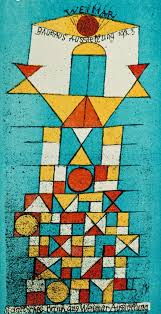The act of writing, specifically the linear, logical sequence of flowing written words, this trail of language has within its very nature the potential to be a clarifying agent. Each fictionalized individual comes down through the incorporation of a myriad of imaginary bloodlines, & within this genetic network, history & characteristic is sealed.
The writers who find within their sphere of motivation the courage to explore, then expand those constricted channels of influence, has the demanding task of both preservation & re-interpretation; the generate material that is beholden to both sacred lore and idealistic optimism.
History, whether apprehended through the libraries of vast & meticulous research or distilled through the warps & wefts of oral tradition, contains all that can be preserved. The writer striving to capture & reflect what their literary mind has deemed worthy of preservation, of amplified communication, this intention has an obligation to clarify archived events through an interpretative filter which bridges a unique co-relation to imagination.
Consider: Oceans of courageous blood spilled upon battlefields; sacrifice shattered beneath the weight of defeat. The writer who aims to make history relatable to a contemporary reader must proceed gently & with cautious patience. These threads of recorded experience intersect at any point & with respectful attention to the burden of sympathy, these stories can be re-claimed for fresh interpretation.
Can we ever truly comprehend the conditions in which another group of people has lived? Perhaps this is impossible to determine but we can for certain be shown circumstance, environment & specific instance to glean the jist of what came before us. Through these components, the writer & reader connect within a frame work of shared imagination & within this space, exchange a common understanding. History & the records which define its perimeters, emerges to lend fresh insight into the circumstances which evolved to determine social legacy; all that has been recorded weaves the tapestry of remembrance.
{Artwork by Howard Hodgkin}
The writers who find within their sphere of motivation the courage to explore, then expand those constricted channels of influence, has the demanding task of both preservation & re-interpretation; the generate material that is beholden to both sacred lore and idealistic optimism.
History, whether apprehended through the libraries of vast & meticulous research or distilled through the warps & wefts of oral tradition, contains all that can be preserved. The writer striving to capture & reflect what their literary mind has deemed worthy of preservation, of amplified communication, this intention has an obligation to clarify archived events through an interpretative filter which bridges a unique co-relation to imagination.
Research & hearsay do not necessarily contain within their unique perimeters the genesis of motivation. It is tasked to the earnest writer to respectfully penetrate root causes of action, to then shape both legacy & collective understanding. Without this sympathetic access, the reader is unable to comprehend, from the emotional position, why they should incorporate a fresh interpretation of what has already transpired; the status quo sustains in the absence of clear motive.
History contains any number of individual strands of remembrance; it forms the collective body through the preservation & interpretation of those unique threads. Generating from some incendiary event, lines of questioning & of the details best extrapolating upon what has been revealed to be pertinent at that moment in time, to the point of causality, these tracks of words serve as available evidence to what actually happened. But is this reliable history? Can the imagination be trusted to assist in clarifying what is of relevance or what might only prove to be a collection of inferior incidents of incomplete motivations? How can the writer looking to understand, then re-interpret history, trust the abstract mechanics of imagination?
Consider: Oceans of courageous blood spilled upon battlefields; sacrifice shattered beneath the weight of defeat. The writer who aims to make history relatable to a contemporary reader must proceed gently & with cautious patience. These threads of recorded experience intersect at any point & with respectful attention to the burden of sympathy, these stories can be re-claimed for fresh interpretation.
Can we ever truly comprehend the conditions in which another group of people has lived? Perhaps this is impossible to determine but we can for certain be shown circumstance, environment & specific instance to glean the jist of what came before us. Through these components, the writer & reader connect within a frame work of shared imagination & within this space, exchange a common understanding. History & the records which define its perimeters, emerges to lend fresh insight into the circumstances which evolved to determine social legacy; all that has been recorded weaves the tapestry of remembrance.
{Artwork by Howard Hodgkin}


















































